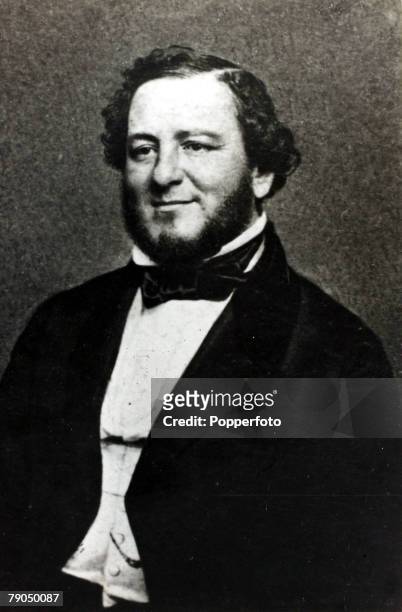Proof of the Shemitic Origin of the Indo-Aryans

Folks, if it weren’t for jooish lies, we wouldn’t know anything at all. The Jewish lie that they are of Shemitic origin has fooled scholars throughout history. This lie is the basis for categorizing Germanic (Anglo-Saxon) languages as “non-Shemitic.” Today’s post is going to demonstrate that all of the languages of Noah’s three sons are related to the same tree. The Jews picked up their Hamito-Shemitic speech from the ancestor, Canaan, bastard son of Ham. The above language tree omits Hebrew from the Indo-Aryan languages because linguists falsely believe that Hebrew is the language of the Jews, a non-Aryan people.
The Evidence of Philology
“For with stammering lips and another tongue will he speak to this people.” — Isa. 28:11.
In addition to the historical and archeological evidence which proves that the Anglo-Saxons are Israel, there is the evidence of linguistics. A few Welsh words are shown below which demonstrate their Hebrew origin.
Welsh Hebrew English Meaning
Anafu Anaf To wound, to cut
Ami Hamale Plentiful, ample
Annos Anas To drive
Annog Anac To incite
Achles Achales Succor
Annwn Annan Abyss
Alaf Aluph Treasure
All Aul Other, another
Afange Aphang Beaver
Bara Barah Bread
Bu Bou It came to pass
Boten Betten Belly
Brawd Berith Brother
Breg Berek Break
Bwth Buth Booth
Brith Barudh Bright
Camel Gamel Camel
Cas Cass Hatred
Cell Cele Cellar
Coler Kolar Collar
Coron Deren Crown
Dagr Daker Dagger
Dalen Dalith Leaf
— selected from British History Traced From Egypt and Palestine by Rev. L.G.A. Roberts, 1927.
Hebrew words and Hebrew syntax were brought to the British Isles by the Phoenicians, Tyrians, Milesians, and Danaans, as well as by the descendants of Pharez and Zarah.
The June issue of “Thy Kingdom Come” contains a report from a speech by Allan Wilson of the International Arthurian Research Foundation:
“After dealing at some length with evidence of the existence of King Arthur (researches proving that there were two kings of that name, thus explaining apparent inconsistencies in timing, etc.), Mr. Wilson spoke of the COELBREN alphabet, found on many inscriptions which gave evidence of the very early arrival of Christianity – in the year A.D. 37. He referred to an Oxford historian, John Williams, who, in 1846, wrote that the British Coelbren alphabet was virtually identical with Etruscan in Italy and Pelasgian in Western Turkey. This alphabet is not confined to Wales. It is found on stones in Aberdeen, in Angus, in London, possibly in Ireland, and in America.
“Mr. Wilson gave most interesting information linking the Khumri and Kimmeroi with Israel, and the ability to link the Coelbren alphabet with the hieroglyphics of Egypt, revealing items regarding the sojourn of Israel in that land…and of the similarity between the syntax of the ancient EGYPTIAN and WELSH languages.” – p. 32.
The America’s Promise Newsletter of May-June 1998 carried an article by Pastor J.S. Brooks entitled, “The Hebrew-Celtic Connection.” Says Pastor Brooks concerning the Hebrew origin of Western Civilization:
“These historical facts have been known for centuries, and a plethora of books by leading historians has documented the “Phoenician origin” of Western civilization. Historians have given the Phoenicians most of the credit for this emigration from Palestine to Europe although the Hebrews were more numerous and were Divinely promised greatly increased numbers. Perhaps the answer to the confusion is that the Hebrew language is a Phoenician dialect, and the two are virtually identical. But as we will see, a great multitude of the “Phoenician” speaking early European colonists can be shown to be Hebrew.” – p. 6.
From Essay on the Antiquity of the Irish Language, Being a Collation of the Irish with the Punic (Hebrew) Language, by Charles Vallancey, 1772:
“On a collation of the Irish with the Celtic, Punic, Phoenician and Hebrew languages, the strongest affinity (nay a perfect Identity in very many Words) will appear: it may therefore be deemed a Punic-Celtic compound…from the Hebrew proceeded the Phoenician, from the Phoenician, Carthaginian or Punic, from Punic was derived Aeolian, Dorian and Etruscan, and from these was formed Latin…Of the Roman Saxon capital letters, the Irish use but three, all the others bear a very great resemblance to the primitive Hebrew and Phoenician.” — p. 2-3.
In 1801, C.S. Sonnini published a document which he discovered during his travels through the Ottoman Empire. He entitled the document “The Long Lost Chapter of the Acts of the Apostles.” It states:
“And Paul, full of the blessings of Christ, and abounding in the spirit, departed out of Rome, determining to go into Spain, for he had a long time purposed to journey thitherward, and was minded also to go from thence into Britain.
For he had heard in Phoenicia that certain of the children of Israel, about the time of the Assyrian captivity, had escaped by sea to ‘the isles afar off,’ as spoken by the prophet, and called by the Romans Britain.” — Vs. l, 2.
“And Paul preached mightily in Spain, and great multitudes believed and were converted, for they perceived he was an apostle sent from God.
And they departed out of Spain, and Paul and his company finding a ship in Armorica sailing unto Britain, they went therein, and passing along the South coast the reached a port called Raphinus.
Now when it was noised abroad that the apostle had landed on their coast, great multitudes of the inhabitants met him, and they treated Paul courteously, and he entered in at the east gate of their city, and lodged in the house of an Hebrew and one of his own nation.” – Vs. 6 – 8.
That city is today known as London. It’s nice to find your kin speaking your own language in a far-off place, isn’t it? All twenty-six verses of this manuscript are contained in an article by T.G. Cole in the Dec. 200 issue of “Thy Kingdom Come.” Yes, Paul was in Britain. The first Christian churches were founded in Britain, not Rome. The persecution of Christians in Britain by Rome was minimal because the isles were so far away.
It is clear from history that the new name for the true Israelites would be the Anglo-Saxons and their predominant language would be English. The German language also shares many common roots with Hebrew. Yiddish, the common language of eastern European Jews, has its origin in the language of Khazaria, plus some German, Slavic, Turkish and some Hebrew as well. In essence, Yiddish is the Khazarian language set to Hebrew letters. This process was begun by the rabbis after the Khazars were converted to Judaism. Although Yiddish uses Hebrew characters, there is little resemblance between Yiddish and spoken Hebrew.
The tracing of the Angles, Saxons, and Normans in their further migration into Britain is taken up next, after the stage is set by documenting the earlier settling of Britain by the House of David and the even earlier (Exodus period) migration to Britain of the Israelites of the line of Zarah of the tribe of Judah.
- Pastor Eli James
More evidence: the Hebrew origin of the German language:
http://www.anglo-saxonisrael.com/content/tracing-dispersion





